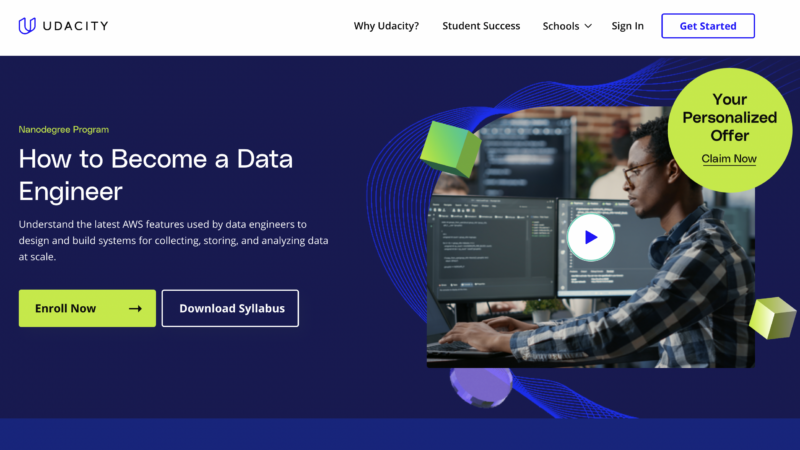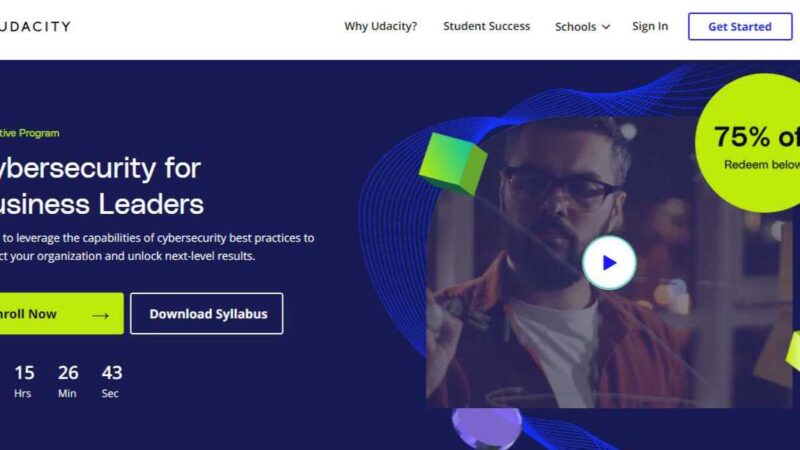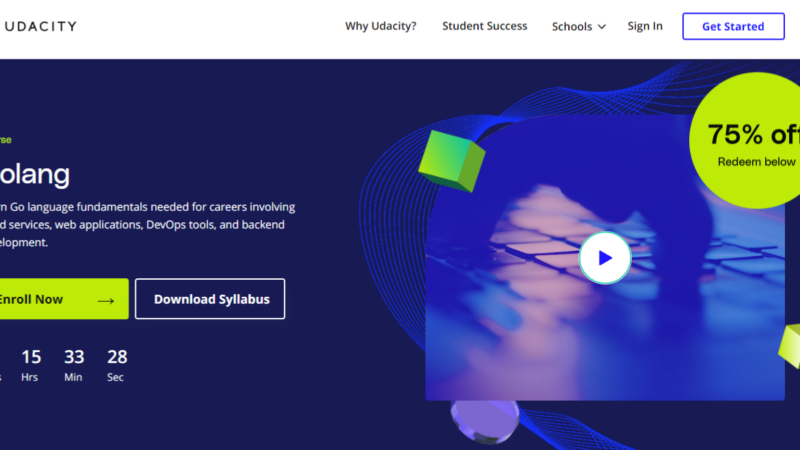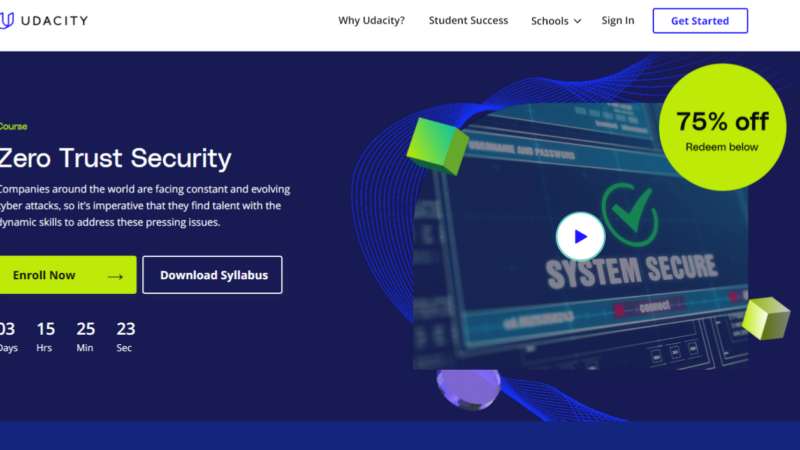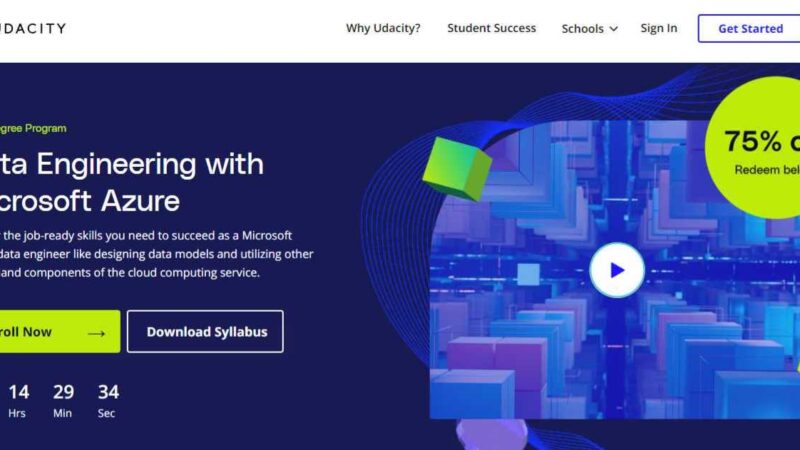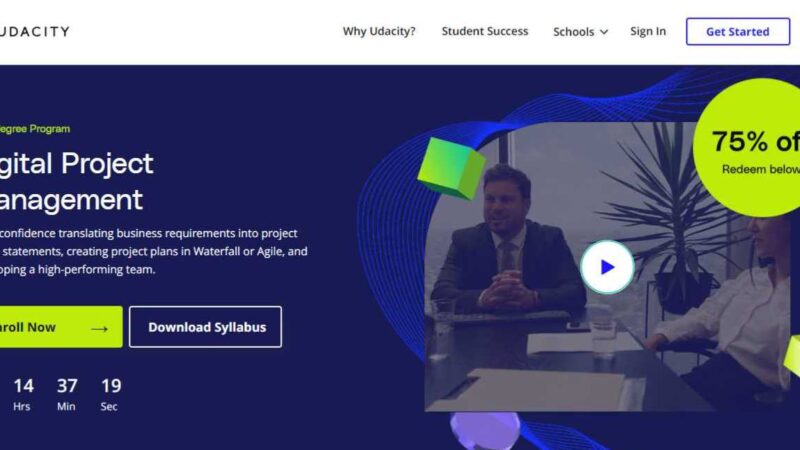Udacity Cloud Developer Nanodegree Review

Udacity AWS Cloud Developer Nanodegree
These days,everything seems to be making its way to the cloud. As the techniques and code used to develop complex architectures advance, so do the opportunities that they bring to businesses all across the industry. To get a start in a career that is promising and profiting, a good solid formation and set of cloud-based skills are necessary but, how can you start?
Thanks to academies like Udacity, you have a chance to start learning from anywhere with the opportunity to create your own schedule. They have a Cloud Developer Nanodegree, one that dives into the depths of the field and leaves graduates with hands on experience thanks to projects embedded at the end of each section. We’ve gone a little further to provide you with enough info to decide if this is the course for you.
About Udacity
Udacity is an academy with a well-known reputation in the technological industry. They give anyone interested in the field a shot to get in and get learning with mini courses that brush on the surface of many leading industry techniques and nanodegrees that dive in a little further. The initial goal of the academy back from its upbringing in 2012 was to create a platform that brought the world of technology to anxious learners across the globe at little to no cost.
As the academy broke boundaries and into all kinds of markets, they would begin to develop certification courses in collaboration with technological giants. Now, they have a large number of successful graduates, some of which are employed by high-ranking multinational companies and a long list of courses that are set to hit the web soon.
Nanodegree Extras
When you sign up for a nanodegree, like Udacity’s Cloud Developer, you’re not only getting an in-depth curriculum but some eye-catching extras. These are Udacity’s signature extras that have gained the academy a lot of attention, as some are too good to pass up. The extras you score with any nanodegree you sign up with are:
Community – Reach out to learners just like you
Mentorship – Tech problems will be no more with a mentor that has your back
Career Help – Resume polishing, LinkedIn review, mock interviews and more can be found here
Projects – Made with the real world in mind, these projects are inspired by those in the industry
Freedom – Choose your schedule and the total time it takes you to compete, logging in and learning any time day or night.
Meet the Instructors
Another feature that seems to bring attention to the academy is their academic staff. The academy has brought together instructors that have experience both educational and in field. Combined, you’ve got years of experience leading you through this course, with lectures led by the following:
Kesha Williams
Kesha knows a thing or two about the power of the cloud, using it to systematically solve complex problems for a plethora of businesses. With more than 20 years under her belt, she’s got a thing or two to share with learners, plus, is currently part of the giant Chick-Fil-A franchise as a software engineer.
Gabriel Ruttner
Gabriel has honed in on his technical skills to become an expert cloud architect. He is passionate about helping start-ups obtain their goals, currently on staff with CTO and Tech Advisor.
Justin Lee
His work in modern system designs has carried him around the world. As a consultant for many top-notch fortune 500s, he’s been exposed to a wide range of industry issues working to come up with tailored solutions.
Ivan Mushketyk
You might have seen Ivan giving instruction on a few cloud concepts. He’s made a name for himself online but, has also worked directly with Amazon Web Services building features that cloud architects know and love today. Besides working with the cloud, Ivan has also broken into the world of Blockchain.
A Look at the Prerequisites
Throughout this course, you’ll be creating and launching code along with cloud constructions. Though there is a bit of an introductory to AWS cloud building specifically, you will want to come equipped with a few things to ensure your success. Experience with these is recommended by the academy:
- JavaScript – Entry to Intermediate
- Git and GitHub
- Linux Command Basics
If any of these goes outside of your current set of skills, you can opt for other courses from Udacity to get you prepped. You can try out Intro course nanodegrees or, earn some of these skills with one of many free courses offered by the academy. You can find a list of all Udacity has to offer here: https://www.udacity.com/courses/all
Course Breakdown
This course is all about AWS and app building with a cloud backbone. You have plenty of opportunities to gain hands on experience with micro projects scattered throughout, finalizing with a capstone that comes straight from your genius mind. There are four sections providing you with the basis you’ll need for the capstone, your final project. The sections and what you’ll learn are broken down below:
Cloud Foundations 101
Getting you good and ready for the concepts to come, you’ll get a breakdown of cloud computing plus a crash course on things like power, storage and advanced management systems that are part of the cloud. To put your knowledge to the test, you’ll work on building and launching your first website, with the aim at getting content from one area to another faster.
Full Stack Apps with AWS
AWS comes with the ability to build up architectures that help in the creation of full stack apps. You’ll see how modernized blueprints work to create apps with a long list of functions, creating your own Instagram-like app Udagram.
Learn Scale from Monolith to Microservices
This section is all about the microservices. You’ll learn the best ways of creating microservices and getting them prepped for launch. Also introduced in this section are several different patterns of architectural structures, helping to get your wheels turning on the numerous possibilities. At the end, you’ll take the Udagram you created and revamp it into a microservice.
Serverless App
Work with advanced apps is included in this section where you’ll see how you can deploy a ‘learn by doing’ type of technology. This section focuses on the theory of the concept and ends with a bit of hands on as you develop your own serverless app.
Capstone Project
Now that you know AWS like the back of your hand, you’ll get to let your creative juices flow. For your project, you’ll be asked to create an application of your choice, making sure to include the scope and feature list.
How Long Does It Take?
One perk of flexible learning is that you’ll be able to take as long as you’d like. You will be given due dates for your projects but, you set your pace, with complete freedom to choose when you login and learn. To give an estimate of how long this course will take you, Udacity claims that if you spend 10 hours a week, you can complete the course in about 4 months.
The time that you take has a lot to do with the final cost, and there is a reason why Udacity gives an estimate for the duration of the course. More on that in a bit. Before beginning and signing up, make sure that you have a clear schedule set, one that you can stick to without getting distracted or putting learning aside.
What’s the Cost?
We mentioned earlier that the cost is affected by the time it takes and here’s what we mean. Udacity charges for the course by monthly access, which is why you can take as long as you’d like; as long as you’re willing to pay the price. They do offer a few options to pay, attempting to make the nanodegrees available for a wider range of learners.
Pay Per Month
The pay per month option can add up if you’re not careful, coming in at $359 per each month. This is why it is important to come into the course with a good idea of how much time you have to dedicate so that you’re not subject to any unforeseen costs.
The Udacity Deal
The reason for the estimated time is the bundle deal. This takes the four month estimate and puts them together with a 15% discount included. This brings the cost to $309 for each month, bring the total to a little over $1200 which must be paid up front.
Both options come with benefits for one reason or another, leaving you to decide which pace and payment option will give you the better deal. If you’re looking to sign up now, you’ll also be able to take advantage of the free month deal that is currently up and running. This means you’ll get four months of access for the price of three while maintaining the 15% discount if you bundle or, start your first month free and then pay for each following month for as long as it takes you.
Learner’s Perspective
Udacity’s online presence is an overall positive one. Though they have received questionable reviews in the past, most learners and graduates had only positive things to say. You can find specifics on top reviewer sites like Quora and Reddit and even find specific course feedback on the website. For this course, here is what a few learners had to say.
“The Cloud Developer Nanodegree program is comprised of content and curriculum to support 5 (five) projects. … School of Cloud Computing . Last year from March to August I participated in Udacity’s Android Developer Nanodegree program and here I want to share my experiences.. I’m going to be working as a software developer at athenahealth starting in April. Sign up. We launched 14 new Nanodegree programs, a machine learning course and scholarship with AWS, and a Private Artificial Intelligence course with Facebook. It’s worth the money.” – David L.
“Intermediate coding and web development experience are required to get the full benefit of the lectures. The topics covered include cloud foundations, full-stack apps on AWS, and monolith to microservices at scale.”–Amber T.
A Glimpse into the Job Market
Tech Republic took a look into cloud computing and the many branches in a market analysis that revealed a 33% increase in the number of employers seeking those with cloud-based skills. When starting off, a professional with an entry-level position can expect to make, on average, $91,000 according to PayScale.
In an interview by App Developer Magazine with Founder and CEO of WANdisco David Richards, they spoke about this sudden spike (27% 2019 to 2020) that has been highly visible in the market. They not only mentioned its ability to continue to grow for the rest of the year but, also mentioned how the future looks very promising. Companies of all types are looking to go digital, seeking architectures that are tailored to their company needs. Computing on the cloud comes with several benefits, to both processing of data and services to keeping information safe and secure. The further in-depth professionals go with their knowledge base, branching out into the world of possibilities that open up with cloud-based knowledge, the more interesting and higher paying the jobs that come along with it.
A Few Final Words
Preparation for an entry level job as a cloud developer requires a certain set of skills. These are skills that, as experience increases, will evolve alongside technology. While the market has been up and on the riseas we dive further into a digitized world, so has the demand for those with the skills necessary to build complex architectural systems.
Udacity’s course aims to get graduates employed, helping them from start to finish as they make their first steps into the growing world of IT. If an all-inclusive academy with a nanodegree that you can finish in 4 months or less can help you launch your career, then Udacity is the one for you, with extras and a rock-solid reputation that’s earned them recognition across the world wide web.
